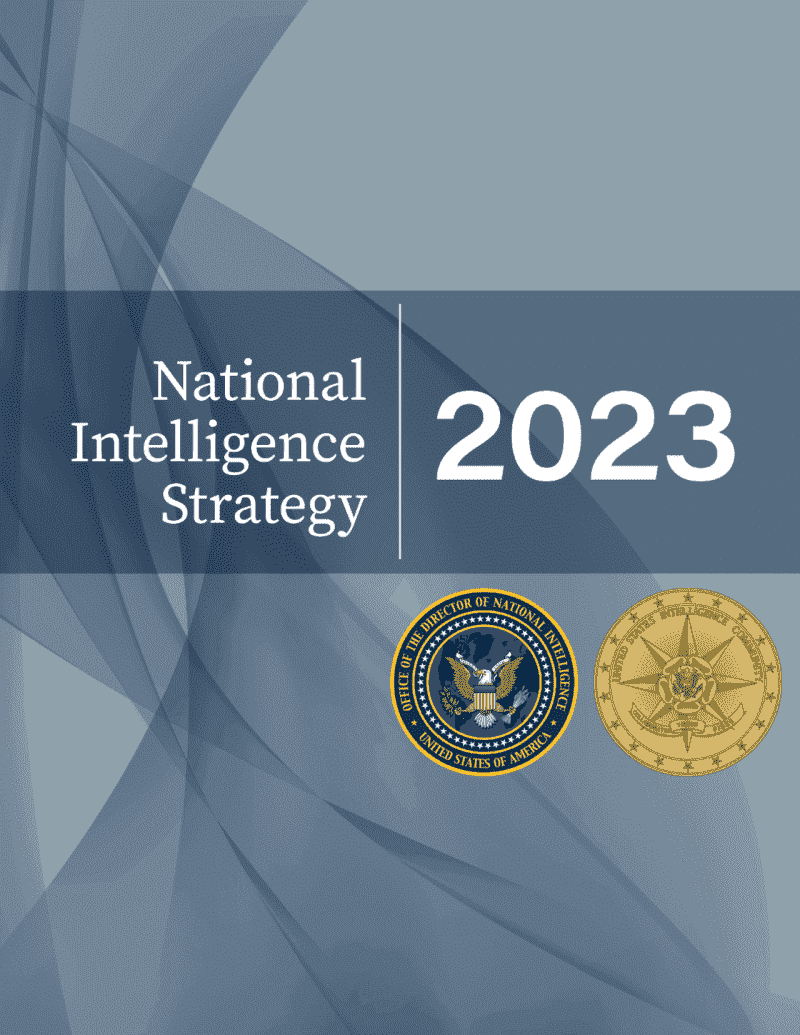U.S. National Intelligence Strategy Explained
From the recently released U.S. National Intelligence Strategy 2023, it is noted that
the increasingly complex and interconnected threat environment stems not only from
national threats, but also from the growing influence of nongovernmental
organizations (NGOs).
The strategy pays particular attention to state actors
and their influence on national security outcomes, as well as how multinational
corporations and transnational social movements shape the world through such means
as creating influence, competing for information, and securing or denying political
or security outcomes. It focuses not only on state actors in the traditional sense,
but also on the increasingly important role of transnational corporations and
transnational social movements in shaping the global political and security
landscape.
The strategy recognizes that information and influence are key
factors in modern political and security struggles. As such, it emphasizes the
importance of access to, use of and protection against information and influence in
determining political and security outcomes. It also implies that both state and
non-state actors need strong capabilities in the information war to compete for and
protect their interests.
In addition, the strategy also emphasizes the
influence of transnational corporations and transnational social movements in the
global political and security landscape. Using advanced technology and extensive
social networks, these actors can rapidly disseminate information, shape public
opinion and even influence political and security outcomes.

Here's a closer look at the strategy in focus.
Public
documents from this release indicate that the Office of the Director of National
Intelligence (ODNI) is providing some fairly public clues and describing how the 18
U.S. intelligence agencies will commit resources and talent over the next four
years.
· The U.S. National Intelligence Strategy is released every four
years and is intended to guide the priorities of all 18 members of the Intelligence
Committee.
· The 2023 Strategy describes six goals, including: Positioning
the Intelligence Center to intensify strategic competition, Recruiting and
developing a workforce that includes the diverse talent it needs, Providing
solutions to large-scale national security threats, Expanding and strengthening U.S.
coalitions, Focusing on transnational challenges such as climate change, drug
trafficking, and supply chain disruptions, among others.
· The updated
National Intelligence Strategy released in 2019 focuses on: strategic intelligence,
anticipatory intelligence to address emerging trends, current operational
intelligence, cyber threat intelligence, counterterrorism, counterproliferation, and
threats from foreign intelligence entities.
So why a national
intelligence strategy for the open public? How does the National Intelligence
Strategy 2023 differ from the previous strategy released in 2019?
The 2023 Strategy is an interesting and simple document that spells out six
objectives. There are differences from the 2019 version, but there are also
similarities.
At a basic level, there are some common themes such as
increased digitization and integration; the need to be faster and more responsive,
and the need to innovate. But this time the strategy is more reflective and
responsive to external conditions. It reflects a changing world and recognizes that
intelligence has a role to play, not only as a partner.
This U.S.
intelligence strategy articulates those major national security and global security
challenges. It then discusses responsibilities and responses to those challenges.
But you don't really see that in the 2019 version.
Second, the 2023
Intelligence Strategy mentions talent acquisition. However, insights on how to seek
talent requirements have not been clearly articulated. What is clear is the
competition for talent and the type of talent that is required; where exactly is the
technical talent, the cultural talent that it needs in order to fulfill this
mission? It's not elaborated.
On the piece of dealing with large-scale
solutions, this strategy does talk about the need to move away from customized
solutions. It emphasizes the importance of integrating the full power of the
intelligence community. Does that mean using the Office of the Director of National
Intelligence to set more standards to promote harmonization across the Intelligence
Community? When those standards are not harmonized, it not only reduces efficiency,
it slows down those who are working with them.
This Strategy also addresses
partnerships, transnational issues, and sharing data. The strategy states that the
intelligence community needs to work not only with non-state actors, but also with
partners beyond the Five Eyes Coalition.
As can be seen, the desired
goals are clearly stated in this intelligence strategy, however, there seems to
be a lack of sufficient understanding of how to achieve these goals. Therefore,
we can interpret this strategy as a plan to address these issues.